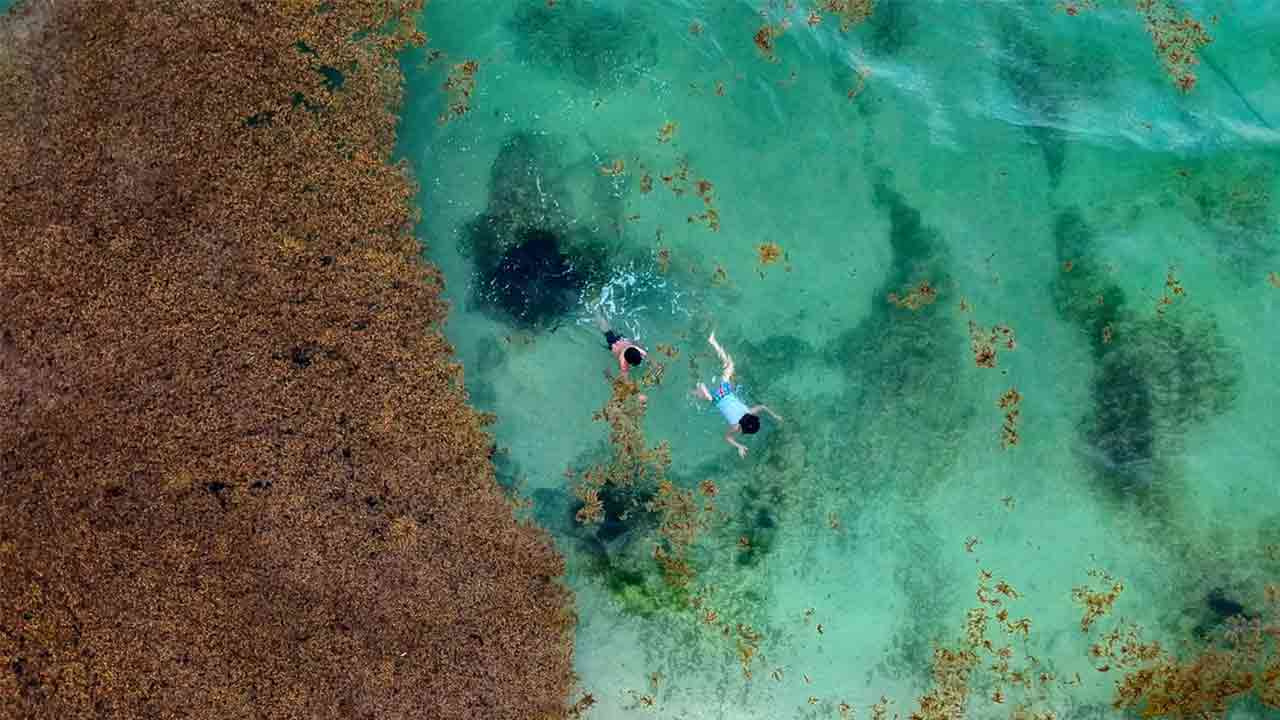Commonwealth _ In 2023, the Caribbean faced many crises due to the proliferation of sargassum seaweed. Toxic gas emissions prompted evacuations, smelly tap water affected homes, and sectors like tourism and fishing struggled to sustain themselves amidst job losses and power outages. These issues have become increasingly common since 2011 when massive sargassum blooms started inundating Caribbean shorelines during spring and summer.
One significant event occurred on April 18, 2023, in Guadeloupe, where the air-quality monitoring agency Gwad’Air advised vulnerable individuals to leave certain areas due to toxic gas levels emitted by sargassum. Additionally, about six weeks later in the Dominican Republic, sargassum blocked an intake pipe at the Punta Catalina electricity plant, leading to a temporary shutdown of one of its units and tragically resulting in the death of a diver named Elías Poling.
The impact extended to Jamaica, where fishers faced challenges as floating sargassum obstructed their boats and reduced their catch during July and August. Similarly, residents in the British Virgin Islands encountered water shortages and unpleasant odors after sargassum clogged their main desalination plant, affecting daily life for weeks. In Puerto Rico, an unexpected late-season influx of sargassum disrupted businesses and left individuals like Christian Natal unemployed for a week.
These incidents affected thousands across the Caribbean, where approximately 70% of the population resides near the coast. Scientists attribute the exponential growth of sargassum to global pollution and climate change, factors over which Caribbean nations have little control but suffer the consequences.
The economic toll is substantial, with the Caribbean Community (Caricom) recording losses of about $102 million in 2022 due to sargassum. Yet, these figures do not encompass losses in other Caribbean countries or the ongoing costs of beach cleaning, estimated at an additional $210 million annually.
Efforts to address the issue have been insufficient, with national-level responses often reactive and lacking coordination. Governments prioritize tourism industry protection, neglecting the needs of local communities and fishers.
To mitigate future crises, a global response is necessary. A French proposal unveiled at the COP28 conference calls for international cooperation to understand and address the sargassum problem comprehensively. However, challenges such as political differences, funding shortages, and debates over priorities hinder progress.
Despite the urgency, the region remains unprepared as sargassum continues to inundate Caribbean shores. This phenomenon, known as the “great Atlantic sargassum belt,” originates from a new sargassum ecosystem in the southern Atlantic Ocean rather than the historically significant Sargasso Sea. Satellite observations reveal the belt’s extensive reach, exceeding 5,000 miles.
While sargassum is not inherently harmful and has historically provided habitat and contributed to beach formation, its unprecedented influx poses severe threats to Caribbean communities and ecosystems. Urgent action is imperative to address the root causes and mitigate the devastating impacts of sargassum on the region’s livelihoods and environment.
The expansive Atlantic sargassum belt, fueled by Sahara dust and warming oceans, poses a persistent global challenge. Despite growing awareness and calls for international cooperation since 2018, comprehensive action remains elusive due to funding constraints, geopolitical tensions, and the COVID-19 pandemic. Efforts to establish a Caribbean-wide response, including a proposed warning and monitoring center, have faltered. Meanwhile, individual nations have crafted their sargassum management plans, yet without a cohesive regional strategy, communities continue to grapple with the detrimental impacts, from health concerns to environmental degradation.
Caribbean leaders frequently cite financial constraints as a hindrance to addressing the sargassum crisis, with local funds allocated to various urgent needs like climate-related disasters such as hurricanes, droughts, and floods. They argue for support from larger countries primarily responsible for the issue, but accessing international climate financing proves challenging. Additionally, the lack of funding and regional coordination has impeded efforts to explore sustainable commercial uses for the seaweed.








